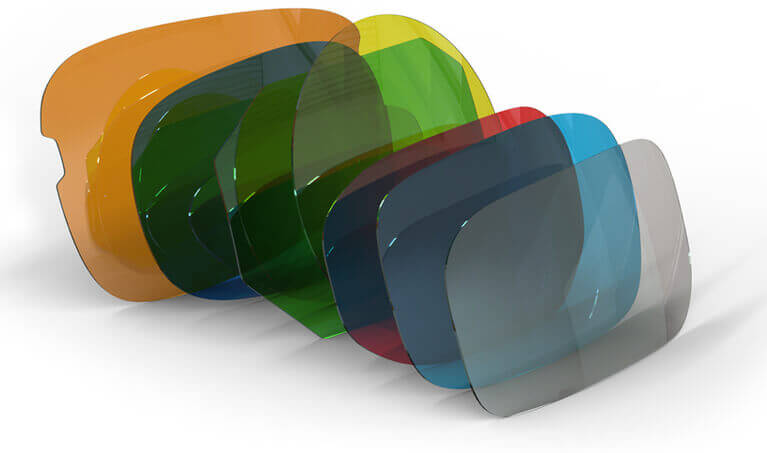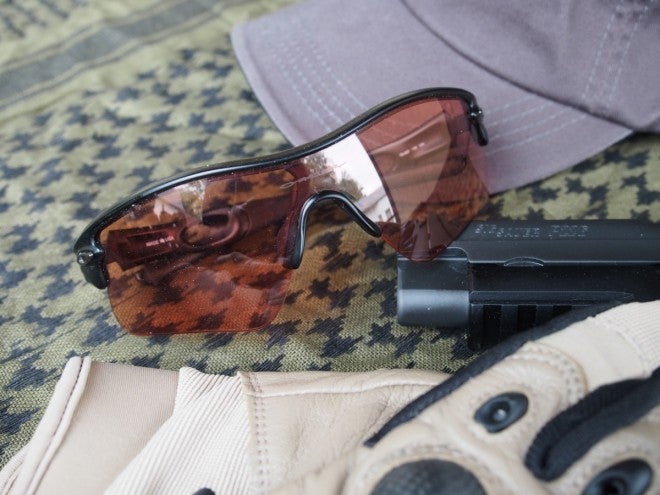Shooting Glasses 101: Exploring Materials and Tips for Optimal Performance
The world of shooting sports, with its blend of precision, discipline, and skill, has enthralled countless enthusiasts for centuries. But the allure isn’t just in the sport; it’s in the equipment and the safety measures that accompany it. Shooting glasses stand out as an indispensable accessory. Far from being mere fashion statements, they serve as critical protective gear, ensuring that each shooter can focus on their craft with safety and confidence. As we embark on this guide, our journey will cover the diverse materials used in crafting these glasses, offering a treasure trove of tips to guarantee peak performance every time.
The Role of Shooting Glasses

Imagine standing at the range, adrenaline pumping, as you align your sight with the target. Now, picture a stray shell or ricochet darting toward your face. Disturbing, isn’t it? This is where shooting glasses prove invaluable. Their primary role is to act as a barrier, safeguarding your eyes from unexpected projectiles, unburned gunpowder, and even harmful UV rays. The nuanced design of these glasses can also bolster performance, offering clearer vision and reducing glare. This dual purpose — protection and enhanced vision — is essential. Without such specialized glasses, shooters risk both their health and their proficiency, turning a moment of thrill into potential danger.
Types of Shooting Glasses
Diverse shooting environments and varying shooter preferences have led to the evolution of multiple types of shooting glasses:
Safety Glasses: The foundational gear for any shooter. These are designed to provide a baseline level of protection from debris, ejected casings, and other potential hazards. They might lack some of the specialized features of other types but serve as a reliable protective measure.
Sport-specific Glasses: Tailored for specific shooting disciplines, these glasses cater to the unique needs of each sport. Trap shooting glasses, for instance, are designed to help the shooter discern the clay target against varying sky conditions.
Understanding the nuances of these types allows shooters to select the perfect pair suited to their specific needs, ensuring that they are both protected and at the pinnacle of their game.
Materials Used in Shooting Glasses
At the heart of any pair of shooting glasses lies its material – the prime determinant of its protective capacity and clarity.
Polycarbonate: Renowned for its impact resistance, polycarbonate lenses are virtually shatterproof. They inherently block harmful UV rays, making them an excellent choice for outdoor shooting. Their lightweight nature ensures comfort even during extended use.
Glass: Classic and revered for its exceptional clarity, glass lenses do come with a heavier weight. While they resist scratching better than other materials, they might shatter upon severe impact.
Plastic: More affordable than polycarbonate, plastic lenses are lightweight. However, they tend to scratch more easily, which might affect clarity over time.
Understanding the strengths and limitations of each material enables shooters to make informed decisions tailored to their specific environments and needs.
Lens Tints and Their Uses

The color of your world matters, especially when it’s viewed through the lens of shooting glasses. Tints play a pivotal role in optimizing vision for different shooting environments.
Yellow: Perfect for overcast or low-light conditions. Yellow lenses heighten contrast, making it easier to spot targets against dim backgrounds.
Gray: Ideal for bright, sunny days. Gray lenses reduce overall brightness without affecting color perception, allowing for comfortable vision without strain.
Choosing the right tint can mean the difference between spotting your target with ease or struggling against the whims of nature.
Frame Materials and Styles
Frames are not just about fashion. They play a crucial role in the comfort, durability, and overall functionality of shooting glasses.
Metal: Offering a classic look, metal frames are sturdy and durable. However, they might not be as flexible as other materials.
Plastic: Often lighter than metal, plastic frames provide flexibility, making them resistant to breakage upon impact.
Nylon: This material stands out for its resistance to both breakage and temperature changes, ensuring longevity and consistent performance.
Apart from material, the style of the frame – be it wraparound, aviator, or shield – influences the field of view, side protection, and how the glasses sit on the face. Your choice should strike a balance between aesthetic appeal, comfort, and functionality.
Fit and Comfort
Even the most advanced ranger shooting glasses would be rendered useless if they’re uncomfortable or ill-fitting. A snug fit ensures the glasses stay in place, offering consistent protection. Adjustable nose pads, rubberized temple tips, and flexible frames can enhance comfort, ensuring the glasses feel like a natural extension of the shooter. Taking the time to try various pairs, understanding one’s facial contours, and prioritizing comfort will undoubtedly pay off in enhanced performance and safety.
Anti-Fog and Anti-Scratch Coatings

Clear vision is paramount when aiming for a target, making lens coatings invaluable.
Anti-Fog Coating: Nothing can be more distracting than a fogged-up lens, especially in rapidly changing temperature environments. An anti-fog coating acts as a barrier, preventing condensation and ensuring clear vision in all conditions.
Anti-Scratch Coating: Lenses, especially those made of plastic, can be susceptible to scratches. These scratches not only diminish clarity but also weaken the lens. An anti-scratch coating prolongs the lifespan of the lenses, ensuring they remain clear and robust.
Investing in these coatings is a small price to pay for consistent, unobstructed vision and durable eyewear.
Prescription Shooting Glasses
Not all shooters have 20/20 vision, but that doesn’t mean compromising on accuracy. Prescription shooting glasses cater to those with vision impairments, offering custom-made lenses that ensure sharp, clear sight. These specialized glasses seamlessly merge prescription needs with safety requirements, ensuring that vision corrections don’t come at the cost of eye protection. With advancements in optics, shooters can now enjoy bifocal and progressive lens options, ensuring that every shot is as precise as the one before.
Maintenance and Cleaning
The longevity and performance of shooting glasses largely depend on their upkeep. Regular cleaning using a gentle lens solution and a microfiber cloth ensures clarity. It’s also essential to periodically inspect the frames and lenses for any signs of wear or damage. Storing them in a hard case prevents potential damage, and avoiding extreme temperatures ensures the materials don’t degrade prematurely. Proper maintenance not only ensures optimal performance but also maximizes the return on investment in quality eyewear.
Shooting Glasses Accessories

Beyond the glasses themselves, certain accessories can enhance the user experience:
Adjustable Straps: For those on the move or engaged in dynamic shooting disciplines, adjustable straps ensure the glasses remain securely in place.
Side Shields: Additional protection against lateral threats, side shields are particularly beneficial in crowded shooting ranges.
Carrying Cases: Not just for storage, quality carrying cases protect the glasses from physical harm and environmental factors when not in use.
Investing in these accessories can augment the functionality and longevity of shooting glasses, ensuring a holistic protective experience.
Conclusion and Safety Reminders
In the intricate dance of precision, skill, and safety that is shooting sports, shooting glasses play an unsung yet vital role. From the materials and tints to the nuanced coatings and fit, understanding the world of shooting glasses is crucial for any enthusiast. But beyond the technicalities, the fundamental essence remains – safety. Always prioritize eye protection, regularly inspect and maintain your gear, and remember that responsible shooting is the mark of a true marksman.
